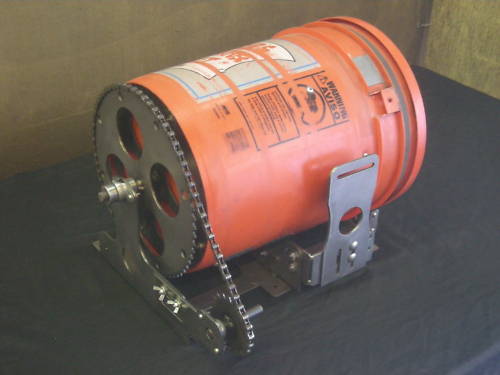I’m a big believer in vibratory finishing of parts after they come off the CNC. It can save you a lot of work deburring as well as tremendously improving the cosmetics of your parts. Best of all is you can just let the machine run off in a corner and do the work.
A machinist I’ve corresponded with quite a lot tells me that he finds the rotating machines work faster and give better results for him than the vibrators. I’ve got a cheap vibrator and been happy with the results, but it does take an awfully long time, particularly considering I mostly do soft aluminum parts. For things made out of something like stainless steel, a small vibrator is just way too slow. That same machinist recently sent me a link to a cheap kit for a rotating tumbler. The link was for an eBay listing, but I’m listing the company’s web site since eBay links expire. You can see Fred Nelson Fabrication has a variety of products largely made with their CNC plasma table.
Their tumbler is made of plasma cut sheet metal with some folding and additional hardware thrown in:

It’s a pretty simple device. Take a couple bicycle sprockets and some chain, a 5 gallon bucket, and some casters for it to roll in, and you have a part tumbler that can be powered by an electric drill. Here’s a video:

Bucket has wooden blocks to make sure the is enough agitation. Big sprocket is just bolted to the bucket to spin it…
If you’ve never messed with vibratory finishing, give it a try. It’s super easy, and cheap too with a rig like this. FNFab is selling the kits without a drill motor for $169. Or you can fab one up for yourself, pretty simple design. I’ll have to break down and try one myself before too long just to see how much faster it’ll finish my parts than the vibrating tumbler I’ve got.
Article Resource cnccookbook.com
Article Resource cnccookbook.com






This is essential to determine the required capacity of the system's generation that will meet a home's self-sufficiency mark. How does one compute for the total power machined parts consumption on a daily basis? The homeowner can do this by simply jotting down the wattage of each home appliance and the number of hours that each appliance is utilized everyday.
ReplyDelete